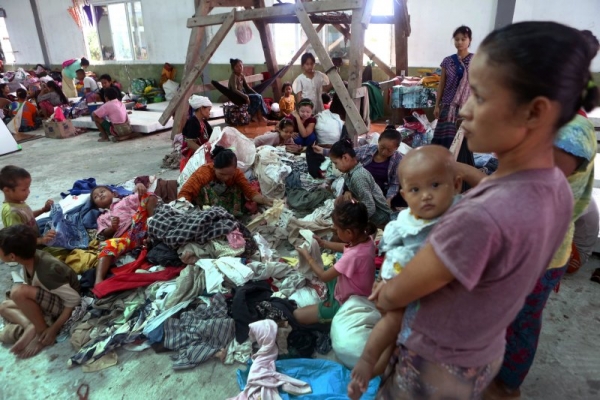The Karen Human Rights Group (KHRG) is an independent community-based organisation working to improve the human rights situation in Myanmar. With this aim, the KHRG has recently issued a field report which analyses information collected by its field researchers, covering the period between January and June 2020.
First, it introduces the context in which field researchers were asked to perform. Despite Myanmar’s first case of COVID-19 being announced on 23 March 2020, official lockdown measures such as local travel restrictions were only implemented starting from mid-April. Due to these limitations, KHRG field researchers primarily collected information by conducting telephone interviews with villagers and local leaders, from early May 2020.
The report explores the few trends that have emerged thanks to the information collected. First and foremost, prevention measures and access to information have considerably varied across the seven districts, because of the complex political dynamics between the Myanmar government and the Ethnic Armed Organisations (EAOs) in Southeast Myanmar. Because of the tensions between the two parties, KHRG urges independent international organisations to play a stronger role to ensure that all villagers get the information and resources they need to protect themselves, while also facilitating access to health workers and non-governmental organisations.
This unstable context has been further exacerbated by the COVID-19 health crisis, which increases local tensions pushing individuals to adopt dangerous livelihood strategies when additional support is not provided. Access to healthcare has been extremely hard as many areas are lacking clinics, which forces villagers to travel and even to cross the State borders to reach Thailand, for medical purposes.
In more detail, the sanitary crisis developed in a period in which the Tatmadaw, namely the Myanmar military, maintained a strong presence in Southeast Myanmar and continued its contentious road construction activities in Mu Traw despite the fervent opposition of the local population, provoking further skirmishes with the Karen National Liberation Army (KNLA). Civilians’ freedom of movement was thus restricted, and the fighting caused internal displacement.
In addition, landmine contamination remains widespread all across Southeast Myanmar, in full violation of the Nationwide Ceasefire Agreement. Civilians have particularly been involved in incidents due to landmines. Between January and June 2020, one civilian died and three were injured. Landmine contamination will continue to pose a serious threat to civilians due to the lack of political will by the Myanmar government and the relevant armed actors to effectively implement the Agreement.
Four instances of sexual violence have also been received by KHRG in the reporting period. Among these, three were against children and one against a woman with an intellectual disability, resulting only in an informal settlement agreement with local village authorities. Justice and reparation are not accessible due to this rural system, as shown by the lack of justice in different cases of attempted child rape back in February 2020.
In conclusion, armed actors appear to be the main human rights violations perpetrators. Their violations include killings, property damage and land confiscation by the Myanmar security forces, in addition to the recruitment of child-soldiers.
To know more, please read:
https://reliefweb.int/sites/reliefweb.int/files/resources/20-1-f1_wb_0.pdf
Author: Barbara Caltabiano; Editor: Margherita Curti




